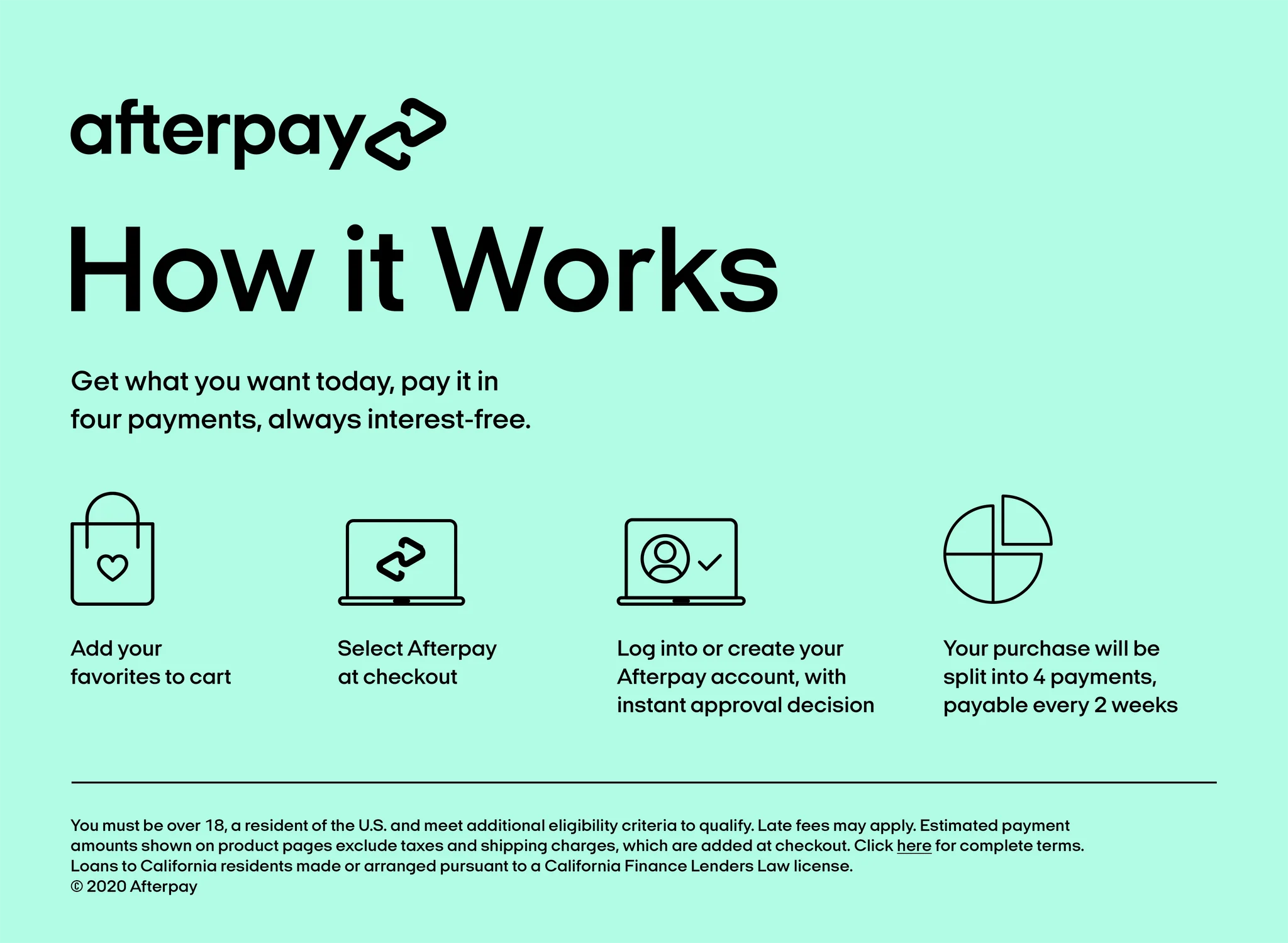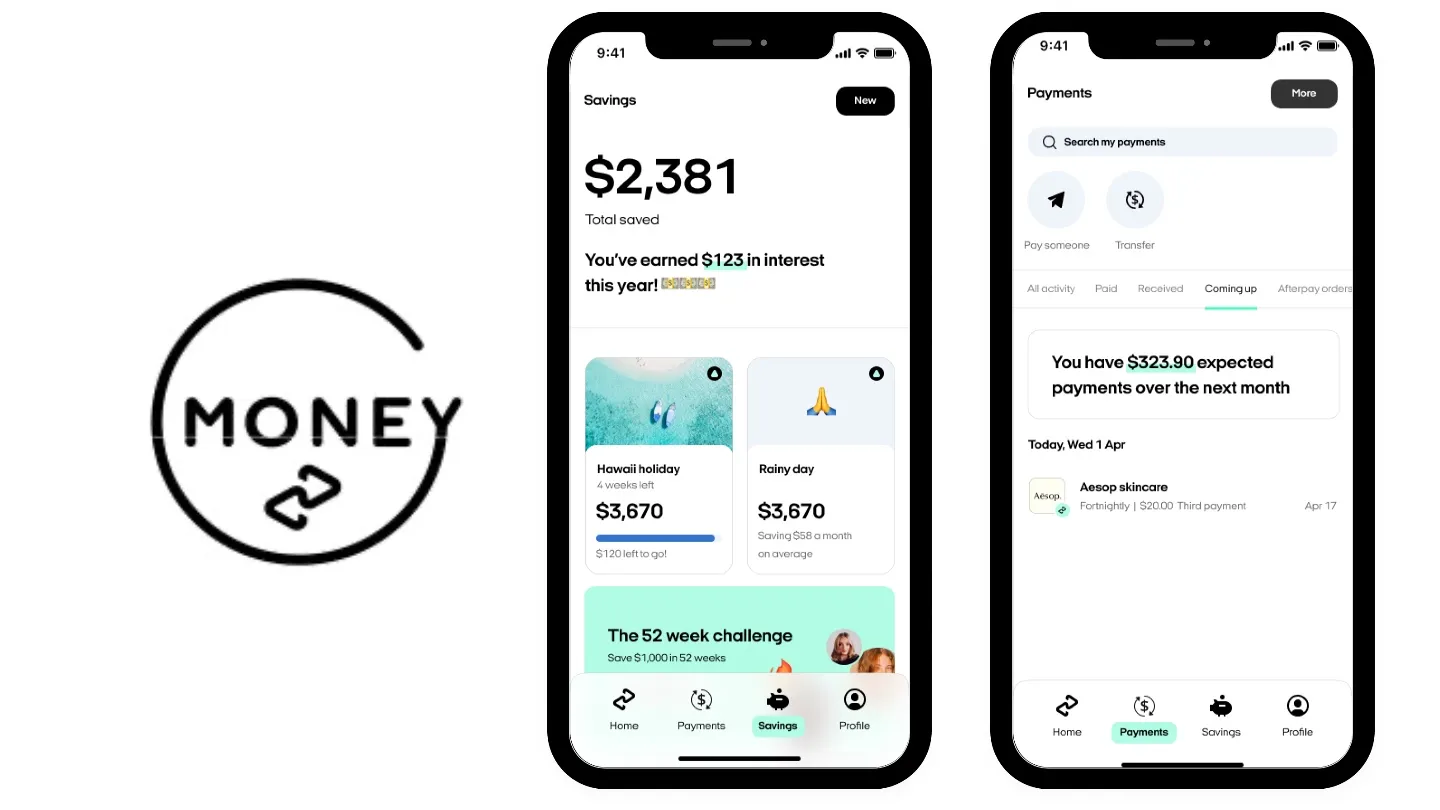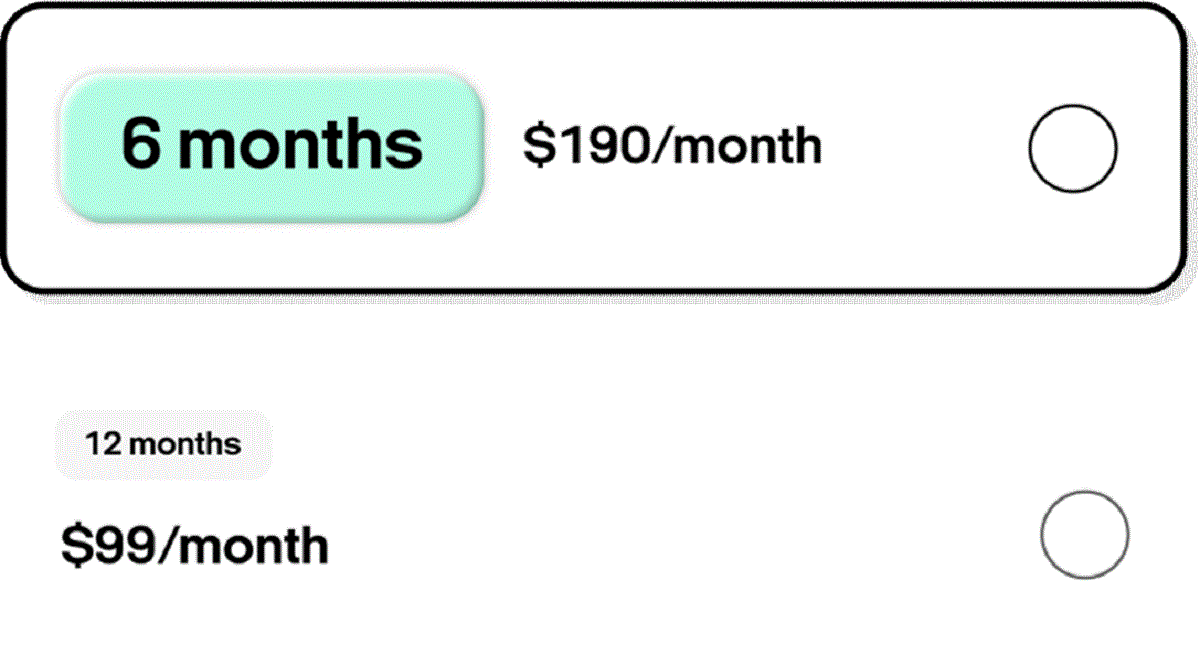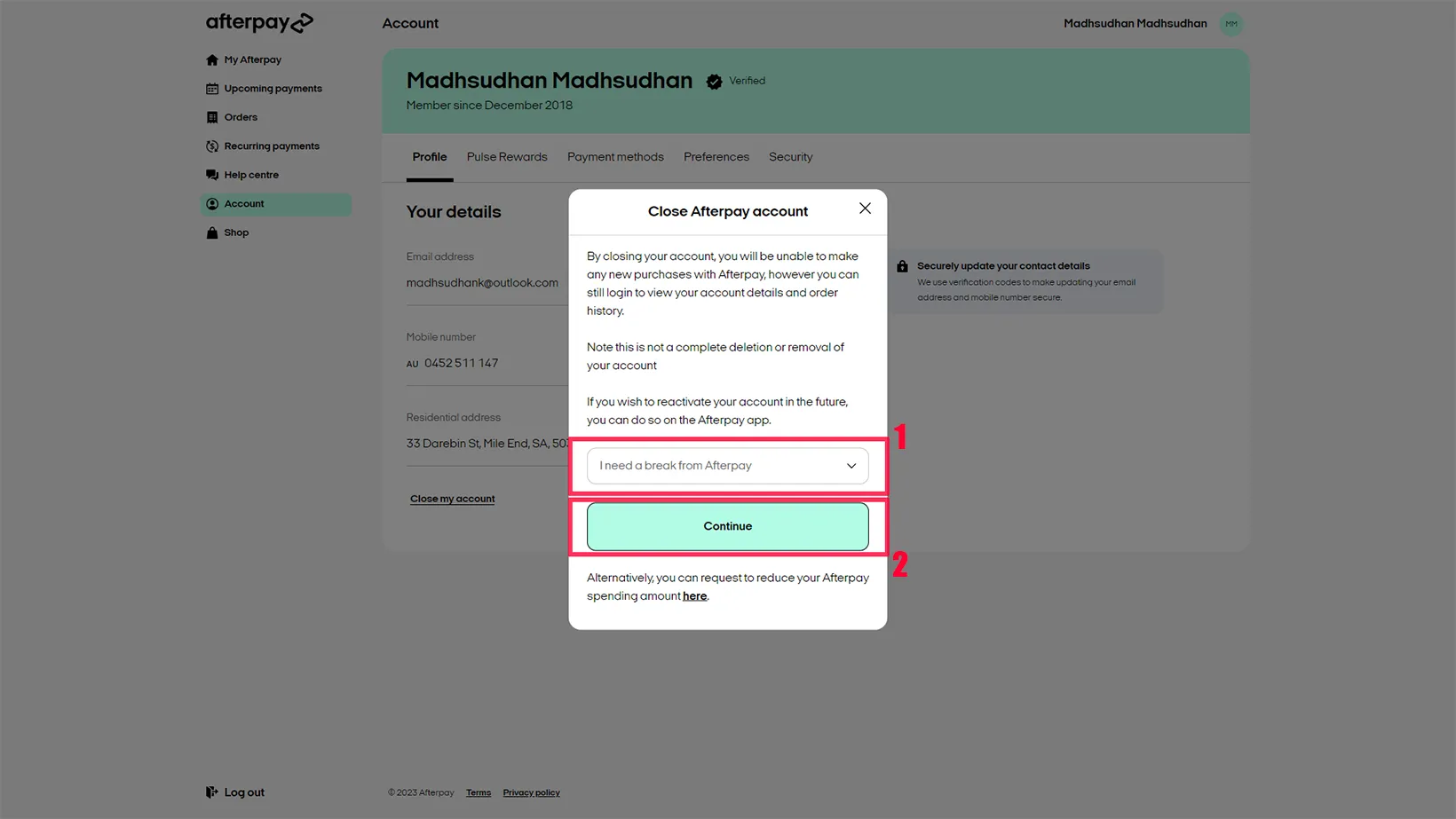What is Afterpay?
Afterpay is a buy-now-pay-later service that allows consumers to make purchases and pay for them in four equal installments, due every two weeks. It offers a convenient and flexible way to make purchases without having to pay the full amount upfront.
With Afterpay, customers can shop both online and in-store and select Afterpay as their payment method during checkout. The service is available for a wide range of products, including clothing, accessories, beauty products, electronics, and more. Afterpay partners with various retailers and merchants, making it widely accessible to consumers.
Afterpay acts as a middleman between the customer and the retailer, providing the option to split the total purchase amount into four smaller payments. The payments are automatically deducted from the customer’s linked debit or credit card, so there’s no need to manually make payments or worry about late fees.
Afterpay is particularly popular among younger shoppers who appreciate the flexibility it offers. It allows them to budget their purchases more effectively and spread out the cost over a few weeks, making it more manageable.
It’s important to note that Afterpay is not a credit service, as it does not charge any interest or additional fees when payments are made on time. However, late fees may apply if a payment is missed, so it’s crucial to stay on top of the payment schedule.
Overall, Afterpay provides a convenient and accessible payment option for consumers, allowing them to enjoy their purchases immediately while spreading out the cost over time.
How does Afterpay work?
Afterpay simplifies the shopping experience by breaking down the payment process into four equal installments. Here’s a step-by-step guide on how Afterpay works:
- Select Afterpay: When making a purchase online or in-store, select Afterpay as the payment method during checkout.
- Create an Afterpay account: If you don’t have an Afterpay account yet, you’ll be prompted to create one. This involves providing your personal information and linking a debit or credit card.
- Make the first payment: Afterpay requires you to pay the first installment at the time of purchase. This amount is typically a quarter of the total purchase price.
- Enjoy your purchase: Once the first payment is made, you can take your purchase home or receive it by mail, depending on your chosen delivery method.
- Pay the remaining installments: Over the next six weeks, Afterpay will automatically deduct the remaining three installments from your linked card. These payments are typically due every two weeks.
It’s important to note that Afterpay does not charge any interest or additional fees when payments are made on time. However, if a payment is missed, late fees may apply. Afterpay will send you reminders when a payment is due to ensure you stay on top of the schedule.
Afterpay also provides a user-friendly app and online portal where you can manage your account, view upcoming payments, and make changes to your payment schedule if needed. This allows you to stay organized and monitor your Afterpay purchases easily.
Overall, Afterpay offers a convenient and flexible payment solution for consumers, allowing them to enjoy their purchases immediately while spreading out the cost over time.
Can you return items purchased with Afterpay?
Yes, you can return items purchased with Afterpay. Afterpay understands that sometimes purchases don’t work out, and they have a straightforward return policy to ensure customer satisfaction.
When you return an item purchased with Afterpay, the return process depends on the specific store’s return policy. It’s important to review the retailer’s return policy to understand their requirements for returns.
Most retailers will accept returns for items purchased with Afterpay, as long as they meet their standard return conditions. This typically includes returning the item in its original condition, with all the tags and packaging intact, and within the specified timeframe.
It’s worth noting that some retailers may offer a different refund method for items purchased with Afterpay. In some cases, you may receive store credit or an exchange instead of a refund to your original payment method.
Before initiating a return, it’s a good idea to contact the retailer’s customer service or check their website for specific instructions on returning items purchased with Afterpay. This will ensure a smooth and hassle-free return process.
Once the retailer approves the return and the item is received, Afterpay will adjust the payment schedule accordingly. If any installments have already been paid, the retailer will issue a refund to Afterpay to cover those payments. Afterpay will then adjust the remaining installment payments or issue a refund to your original payment method, depending on the retailer’s return policy.
Remember to keep an eye on your Afterpay account and payment schedule after returning an item to ensure that everything is properly adjusted and any refunded payments are processed correctly.
Overall, returning items purchased with Afterpay is generally straightforward, as long as you adhere to the retailer’s return policy and meet their specific requirements.
How long do you have to return an item?
The timeframe for returning an item purchased with Afterpay depends on the specific retailer’s return policy. Each retailer may have different requirements and deadlines for returns, so it’s essential to review their policy before making a purchase.
Most retailers have a standard return window of 14 to 30 days, allowing customers to return items within this timeframe for a refund or exchange. However, some retailers may offer extended return periods, especially during the holiday season.
It’s important to note that the clock starts ticking from the date of purchase, not from when you receive the item. Additionally, the return period may vary for different types of products, such as electronics or perishable items.
When returning an item purchased with Afterpay, the key is to initiate the return within the retailer’s specified timeframe. This means contacting the retailer and informing them of your intention to return the item before the deadline expires.
Keep in mind that returning an item after the retailer’s designated return period may result in the denial of your return or may subject you to different refund options, such as store credit instead of a refund to your original payment method.
To ensure a smooth return process, it’s always recommended to check the retailer’s return policy before making a purchase with Afterpay. This will help you understand the timeframe for returns and any additional requirements or conditions that may apply.
Once you have familiarized yourself with the retailer’s return policy, make sure to initiate the return process promptly if you decide to return an item purchased with Afterpay. This will give you the best chance of receiving a refund or exchange according to the retailer’s guidelines.
Overall, the timeframe for returning an item purchased with Afterpay will vary depending on the retailer’s specific policy. Checking the return policy and initiating the return process within the designated timeframe is crucial to ensure a successful return.
Is there a cost for returning items with Afterpay?
The cost of returning items purchased with Afterpay varies depending on the retailer’s return policy. In most cases, Afterpay does not charge any additional fees for returns. However, it’s important to review the specific retailer’s return policy to understand if there are any associated costs.
Many retailers offer free returns, especially for items that are defective, damaged, or not as described. They may provide a prepaid shipping label or cover the return shipping costs themselves.
However, some retailers may require customers to cover the return shipping costs when returning items purchased with Afterpay. In these cases, it’s advisable to carefully consider the cost of the return shipping and weigh it against the value of the item being returned.
When reviewing the retailer’s return policy, also check if they offer any exceptions or waivers for return shipping costs. Some retailers may waive the return shipping fee if the item is being returned due to a defect or if they made an error in fulfilling the order.
In situations where the retailer charges a return shipping fee, it’s important to factor in this cost when deciding whether to return the item or explore alternative options, such as exchanging it or reselling it.
Additionally, keep in mind that the responsibility for the return shipping costs falls on the customer unless the retailer explicitly states otherwise. This means that even if the item is purchased with Afterpay, the customer is typically responsible for the return shipping expenses.
Overall, the cost of returning items purchased with Afterpay can vary depending on the retailer’s return policy. While Afterpay itself does not charge any additional fees for returns, customers should carefully review the retailer’s policy to understand if there are any associated costs, particularly regarding return shipping expenses.
How to return an item purchased with Afterpay?
Returning an item purchased with Afterpay is generally straightforward, although the specific process may vary depending on the retailer’s return policy. Here are the general steps to return an item purchased with Afterpay:
- Review the retailer’s return policy: Before initiating a return, carefully review the retailer’s return policy. Look for information about the timeframe for returns, any specific conditions or requirements, and whether they offer free returns or charge return shipping fees.
- Contact customer service: If you decide to return an item, reach out to the retailer’s customer service. You can usually find their contact information on their website or your purchase confirmation email. Inform them of your intention to return the item and inquire about their specific return process.
- Package the item appropriately: Prepare the item for return by packaging it securely. This may include using the original packaging, if available, or wrapping it in protective material to prevent any damage during transit.
- Include necessary documentation: Some retailers may require you to include certain documentation with your return, such as a return authorization number, a copy of the purchase receipt, or a return form. Make sure to follow the retailer’s instructions regarding any required documentation.
- Address and ship the return: Obtain the correct return address from the retailer’s customer service and ship the package back to them using a reliable shipping method. It’s typically recommended to use a trackable shipping service to ensure the safe and timely delivery of the returned item.
- Keep records and tracking information: It’s essential to keep records of the return, including the tracking number, shipping receipt, and any communication with the retailer. This documentation will come in handy if there are any issues or discrepancies regarding the return.
- Monitor your Afterpay account: After returning the item, keep an eye on your Afterpay account and payment schedule. The retailer will notify Afterpay about the return, and any applicable refunds or adjustments will be made accordingly to your remaining installments.
It’s important to note that the return process may differ slightly for in-store purchases made with Afterpay. Some retailers allow in-store returns for online purchases, while others may require you to initiate the return through their online process.
Overall, carefully following the retailer’s return instructions and maintaining clear communication with their customer service will ensure a smooth and successful return process for items purchased with Afterpay.
What if you want a refund instead of store credit?
When returning an item purchased with Afterpay, the refund process may vary depending on the specific retailer’s return policy. Some retailers offer the option to receive a refund to your original payment method, while others may provide store credit instead.
If you prefer a refund to your original payment method instead of store credit, there are a few things you can do:
- Review the retailer’s return policy: Start by carefully reviewing the retailer’s return policy. Look for information on how refunds are processed and whether they offer refunds to the original payment method for items purchased with Afterpay.
- Contact customer service: If the retailer’s return policy is not clear regarding refunds, reach out to their customer service. Inquire about the refund options available for items purchased with Afterpay and state your preference for a refund to your original payment method.
- Explain your preference: When contacting customer service, explain your preference for a refund to your original payment method instead of store credit. Communicating your preference can help customer service understand your needs and assist you accordingly.
- Return the item within the specified timeframe: Ensure that you adhere to the retailer’s return timeframe and follow the proper return process. Returning the item within the specified timeframe increases your chances of receiving a refund instead of store credit.
- Consider alternative options: If the retailer does not offer refunds to the original payment method for items purchased with Afterpay, consider other options to recoup your funds. This could include reselling the item or exploring buyback programs, if available.
Remember that each retailer has its own policies and procedures regarding refunds for items purchased with Afterpay. It’s crucial to familiarize yourself with the retailer’s specific policy and communicate your preference for a refund to your original payment method early in the return process.
By following these steps and maintaining clear communication with the retailer, you can increase the likelihood of receiving a refund to your original payment method instead of store credit for items purchased with Afterpay.
What if you’ve made partial payments for the item with Afterpay?
If you’ve made partial payments for an item purchased with Afterpay and decide to return it, the refund process may vary depending on the specific retailer’s return policy. Here’s what you need to know:
1. Review the retailer’s return policy: Start by carefully reviewing the retailer’s return policy. Look for information on how partial payments are handled when returning items purchased with Afterpay. Some retailers may offer a full refund, including any payments made, while others may provide a partial refund or store credit for the remaining balance.
2. Contact customer service: If the retailer’s return policy is not clear regarding partial payments, reach out to their customer service. Explain that you’ve made partial payments for the item with Afterpay and inquire about their refund process in such cases. Customer service will provide guidance on the available options.
3. Return the item within the specified timeframe: Ensure that you adhere to the retailer’s return timeframe and follow their proper return process. Returning the item within the specified timeframe is crucial to facilitate the refund process and ensure that any applicable payments are refunded or adjusted accordingly.
4. Refund options: Depending on the retailer’s policy, there are a few potential refund options for items on which partial payments have been made:
- Full refund: Some retailers may offer a full refund of the item’s total value, including any partial payments made through Afterpay. In this case, you would receive a refund equal to the total amount paid, including the initial installment and subsequent payments.
- Partial refund: Other retailers may provide a partial refund when returning an item on which partial payments have been made. In such cases, you would receive a refund equivalent only to the remaining balance owed for the item, excluding the partial payments made.
- Store credit: In certain instances, retailers may offer store credit for the value of the partial payments made, rather than providing a cash refund. This store credit can typically be used towards a future purchase.
It’s important to communicate directly with the retailer and inquire about their specific policy regarding partial payments and refunds for items purchased with Afterpay. This will help you understand what to expect during the return process and avoid any confusion or misunderstandings.
By following the retailer’s return instructions and maintaining clear communication, you can ensure the refund process for items on which partial payments have been made goes smoothly, and any applicable payments are appropriately refunded or adjusted.
Can you return sale items purchased with Afterpay?
Returning sale items purchased with Afterpay is typically possible, although the specific return policy for sale items may vary depending on the retailer. It’s important to review the retailer’s return policy to understand their specific guidelines for returning sale items purchased with Afterpay.
In most cases, retailers treat sale items purchased with Afterpay the same way as regular-priced items when it comes to returns. However, there may be certain exceptions or conditions that apply specifically to sale items, such as different refund methods or restrictions on eligibility for returns.
When considering a return for a sale item purchased with Afterpay, it’s important to keep the following points in mind:
1. Review the retailer’s return policy: Carefully read the retailer’s return policy regarding sale items. Look for any specific conditions or restrictions that may apply to sale items purchased with Afterpay. This will help you understand what is required for a successful return.
2. Check the eligibility of sale items for returns: Some retailers may have stricter return policies for sale items, particularly for items marked as “final sale” or “non-returnable.” These items are typically excluded from the standard return policy and cannot be returned for a refund or exchange.
3. Understand refund options: The retailer may offer different refund options for sale items purchased with Afterpay. This may include providing a refund to your original payment method, issuing store credit, or offering an exchange for a different item. Check the retailer’s policy to determine which refund option is available for sale items.
4. Follow the return process: To initiate a return for a sale item purchased with Afterpay, follow the retailer’s specified return process. This usually involves contacting customer service, obtaining a return authorization if required, and packaging and shipping the item back to the retailer according to their instructions.
By reviewing the retailer’s return policy, understanding the eligibility of sale items for returns, and following the proper return process, you can ensure a smooth return experience for sale items purchased with Afterpay.
Keep in mind that each retailer may have different policies regarding sale item returns, so it’s essential to familiarize yourself with their specific guidelines before making a purchase. The return policies may outline any exceptions or unique conditions that apply to sale items purchased with Afterpay, ensuring that you are aware of your rights and options when returning a sale item.
Who pays the return shipping costs?
When it comes to return shipping costs for items purchased with Afterpay, the responsibility for paying these costs may vary depending on the specific retailer’s return policy. Here are a few scenarios to consider:
1. Free return shipping: Some retailers offer free return shipping for items purchased with Afterpay. This means that they will provide a prepaid shipping label or cover the return shipping costs themselves. This is often the case for returns due to defects or errors on the retailer’s part.
2. Customer-paid return shipping: In many cases, the customer is responsible for paying the return shipping costs when returning an item purchased with Afterpay. The retailer’s return policy should specify this requirement, and it’s important to consider the cost of return shipping before deciding to return an item.
3. Exceptions for defective or incorrect items: Some retailers may waive the return shipping fee if the item is being returned due to a defect or if they made an error in fulfilling the order. This is a customer-friendly practice to ensure that customers are not burdened with the cost of returning faulty or incorrect items.
4. In-store returns: For certain retailers that have physical store locations, they may allow customers to return items purchased online with Afterpay in-store. In these cases, there is typically no return shipping cost involved since the item is being returned directly to the store.
It’s important to carefully review the retailer’s return policy to understand who bears the return shipping costs for items purchased with Afterpay. This information is crucial for making an informed decision regarding the return of an item.
If the retailer requires the customer to cover the return shipping costs, it’s advisable to choose a reliable shipping method that provides tracking and insurance, especially for valuable or fragile items. This ensures that the returned item reaches the retailer safely and can be tracked throughout the shipping process.
By understanding the retailer’s return policy and who is responsible for return shipping costs, you can make informed decisions when returning items purchased with Afterpay. Remember to keep any shipping receipts or tracking information as proof of return in case any issues arise.
Does Afterpay refund the Afterpay fees when returning an item?
When it comes to the refund of Afterpay fees upon returning an item, the policy may vary depending on the specific circumstances and the retailer’s return policy. Here are some important points to consider:
1. Standard Afterpay fees: Afterpay charges fees for its service, which are automatically included in the installment payments. These fees are typically non-refundable. Therefore, when you return an item purchased with Afterpay, the Afterpay fees you have already paid are generally not refunded.
2. Refund of other payments: However, when you return an item, the retailer will refund any payments you have made directly to them. This refund may include the initial installment and subsequent payments you made for the item. The refund amount will be dictated by the retailer’s return policy.
3. Adjustments to future payments: Afterpay works closely with retailers to manage returns and refunds. Once the retailer processes the return and provides the refund, Afterpay adjusts the remaining payment schedule accordingly. This ensures that any future payments you still owe for the returned item are properly adjusted. This adjustment may include reducing the number of remaining installments or lowering their amounts.
4. Late fees and adjustments: Afterpay may also make adjustments to any late fees associated with the returned item. If you have incurred late fees before returning the item, Afterpay typically adjusts or waives these fees based on the refund and return process initiated by the retailer.
It’s important to note that the refund process, including adjustments to Afterpay fees and installment payments, is managed by the retailer and Afterpay collaboratively. Therefore, the specific details and policies regarding Afterpay fees may be determined by the retailer’s discretion.
To understand the specifics of Afterpay’s refund policy for fees, it’s recommended to review the terms and conditions on the Afterpay website, as well as the retailer’s return and refund policy. Additionally, contacting Afterpay’s customer service or the retailer’s support directly can provide further clarification regarding the refund of Afterpay fees when returning an item.
By familiarizing yourself with the policies of both Afterpay and the retailer, you can gain a clearer understanding of the refund process, including any adjustments to Afterpay fees, when returning an item purchased with Afterpay.
Can you exchange an item purchased with Afterpay?
Yes, in most cases, you can exchange an item purchased with Afterpay. However, the exchange process may vary depending on the specific retailer’s exchange policy. Here’s what you need to know:
1. Review the retailer’s exchange policy: Start by carefully reviewing the retailer’s exchange policy. Look for information on whether they accept exchanges for items purchased with Afterpay and any specific conditions or requirements for exchanges.
2. Check exchange eligibility: Some retailers may have restrictions on what items are eligible for exchange. This could include factors such as the condition of the item, whether it has been used or washed, and the availability of stock for the desired exchange item. Ensure that your item meets the retailer’s exchange eligibility criteria.
3. Contact customer service: If you want to exchange an item purchased with Afterpay, reach out to the retailer’s customer service. Inform them of your intention to exchange the item and inquire about their specific exchange process for Afterpay purchases.
4. Follow the exchange process: Follow the retailer’s exchange instructions closely. This typically involves returning the original item and indicating the desired exchange item. The retailer will then process the exchange and ship the new item to you once they receive the original item.
5. Adjustments to Afterpay payments: Afterpay works closely with retailers to manage exchanges. Once the retailer processes the exchange, Afterpay adjusts the remaining payment schedule accordingly. This ensures that any future payments you still owe for the exchanged item are properly adjusted.
It’s important to note that the exchange process may differ for in-store purchases made with Afterpay. Some retailers allow in-store exchanges for online purchases, while others may require you to initiate the exchange through their online process.
If the desired exchange item is not available or if you prefer a different item altogether, it’s advisable to speak with customer service to explore alternative options. This could include exchanging for store credit or receiving a refund to your original payment method if the retailer allows for it.
Each retailer may have different policies regarding exchanges for items purchased with Afterpay, so make sure to familiarize yourself with their specific guidelines. By doing so, you can ensure a smooth exchange process for items purchased with Afterpay.
Can you request a return on items from multiple orders?
Yes, it is generally possible to request a return on items from multiple orders made with Afterpay. However, the process for returning multiple items may vary depending on the specific retailer’s return policy. Here are a few things to consider:
1. Review the retailer’s return policy: Begin by carefully reviewing the retailer’s return policy. Look for information on whether they allow returns on items from multiple orders and any specific conditions or requirements for returning multiple items.
2. Contact customer service: If you wish to return items from multiple orders, it’s best to contact the retailer’s customer service. Explain your situation and inquire about their specific process for returning multiple items purchased with Afterpay.
3. Follow the return instructions: Once you have received guidance from customer service, follow the retailer’s instructions for returning the items. This may include packaging the items separately or together, completing any required forms, and labeling the packages correctly.
4. Provide necessary documentation: Some retailers may require specific documentation for returning multiple items from multiple orders. This could include order numbers, proof of purchase, or return authorization forms. Make sure to comply with the retailer’s requirements to facilitate the return process.
5. Keep track of individual refunds: Each item from a separate order may be refunded individually, following the retailer’s refund process. Afterpay will adjust the remaining payment schedule accordingly. It’s essential to keep track of the individual refunds and monitor any adjustments made to your Afterpay account.
It’s important to note that returning items from multiple orders may involve separate transactions and shipping processes for each item. Therefore, it’s advisable to plan and consider the associated costs of return shipping, especially if the retailer requires the customer to cover the return shipping expenses.
Some retailers may have a limit on the number of items or orders that can be returned at once. Make sure to check if there are any restrictions on return quantities or timelines to ensure compliance with the retailer’s policies.
By reviewing the retailer’s return policy, contacting customer service for guidance, and following the specific instructions for returning multiple items, you can ensure a smooth and organized return process for items purchased with Afterpay from multiple orders.
What happens if you don’t pay Afterpay installments for an item you return?
If you return an item purchased with Afterpay and have already made partial payments towards the item, it’s important to understand the implications and consequences of not paying the remaining Afterpay installments. Here’s what happens if you don’t pay Afterpay installments for an item you return:
1. Adjustments to Afterpay payments: When you return an item, the retailer initiates the refund process, and Afterpay adjusts your remaining payment schedule accordingly. This means that any future installments you owed for the returned item are typically reduced or removed from your payment schedule.
2. Refunds for installments already paid: If you’ve already made payments towards the item before returning it, the retailer will issue a refund for those specific installments. This refund is usually processed by the retailer and should be credited back to your original payment method or applied as a store credit, depending on the retailer’s refund policy.
3. Late fees and missed payments: If you fail to make the remaining Afterpay installments for the returned item, it can result in late fees and negative impacts on your creditworthiness. These late fees are enforced by Afterpay and can accumulate over time if you continue to miss payments.
4. Relationship with Afterpay: Not paying Afterpay installments for a returned item can negatively impact your relationship with Afterpay. Afterpay values responsible use and prompt payment, and failing to fulfill your payment obligations can affect your ability to use Afterpay in the future.
5. Collection efforts: In extreme cases where payments are significantly overdue and attempts to resolve the outstanding balance have been unsuccessful, Afterpay may employ collection agencies or take legal action to recover the remaining amount owed. This can have severe consequences, including damage to your credit score and potential legal repercussions.
It’s essential to communicate with Afterpay if you encounter any difficulties in making payments or have concerns about the installment schedule. They may be able to work out a suitable arrangement or provide guidance on how to proceed in the event of returning an item.
In summary, it’s crucial to fulfill your payment obligations for Afterpay installments, even if you have returned the item. Not paying the remaining installments can result in late fees, damage to your creditworthiness, and potential legal consequences. If you have any concerns or difficulties, it’s always advisable to communicate with Afterpay and seek assistance.
Can you return an item in-store that was purchased online with Afterpay?
Returning an item in-store that was purchased online with Afterpay is often possible, although the specific process may vary depending on the retailer’s return policy. Here are a few key points to consider:
1. Review the retailer’s return policy: Start by reviewing the retailer’s return policy to see if they allow in-store returns for items purchased online with Afterpay. Look for any specific conditions or requirements for returning items in-store.
2. Check the return timeframe: Ensure that the return period specified by the retailer has not expired. The return timeframe typically starts from the date of purchase for online orders, regardless of whether Afterpay was used as the payment method.
3. Bring necessary documentation: When returning an item in-store, make sure to bring any documentation related to the purchase. This may include the order confirmation email, the receipt, or the packing slip. These documents will help the store associate process the return smoothly.
4. Follow the designated process: Each retailer may have a specific process for returning online purchases in-store. This may involve providing the item and any required documentation to a store associate, following their instructions for processing the return, and indicating your preference for a refund, exchange, or store credit.
5. Adjustments to Afterpay payments: Afterpay works closely with retailers to manage returns, including in-store returns. Once the retailer processes the return, Afterpay adjusts your remaining payment schedule accordingly. This ensures that any future payments you still owe for the returned item are properly adjusted.
It’s important to note that not all retailers allow in-store returns for items purchased online with Afterpay. Some retailers may require online returns to be sent back by mail or through a designated return process. Reviewing the retailer’s return policy and contacting their customer service for clarification can help you understand the available return options.
If the item was purchased online with Afterpay but does not qualify for an in-store return, it may still be possible to initiate the return online and follow the retailer’s designated return process, which may involve shipping the item back.
By following the retailer’s instructions and adhering to their return policy, you can successfully return an item purchased online with Afterpay in-store, provided that the retailer permits in-store returns for online purchases.
What if the merchant’s return policy differs from Afterpay’s?
In some cases, the return policy of the merchant may differ from the return policy of Afterpay. When this happens, it’s important to understand how these differences can impact the return process and your options as a customer:
1. Review both policies: Start by reviewing both the merchant’s return policy and Afterpay’s return policy. Understand the specific conditions, timeframes, and requirements outlined by each. These policies may be available on the retailer’s website or by contacting their customer service. Comparing the policies will help you identify any disparities.
2. Communicate with the merchant: If the merchant’s return policy differs from Afterpay’s, it’s advisable to reach out to their customer service. Seek clarification on their specific policy for returns, especially related to items purchased with Afterpay. Ask about any potential exceptions or alternative options for returning items and discuss the discrepancies between their policy and Afterpay’s.
3. Understand the merchant’s policy: The merchant’s return policy takes precedence when it comes to the actual return process. They may have specific requirements or conditions, such as a shorter return timeframe or different refund methods. Ensure that you understand the merchant’s policy before initiating a return.
4. Consider Afterpay payments: While the merchant’s return policy may differ from Afterpay’s, it’s important to remember that Afterpay is responsible for adjusting your remaining payment schedule once the return is processed. Even if the merchant offers different refund options, Afterpay will ensure that your outstanding payments are adjusted accordingly based on the merchant’s return process.
5. Evaluate your options: If the merchant’s return policy does not align with Afterpay’s, consider your options. You may need to decide whether to proceed with a return according to the merchant’s policy or explore alternative solutions such as exchanging the item, accepting store credit, or seeking a refund directly from Afterpay.
6. Seek assistance from Afterpay: If you encounter challenges or confusion due to discrepancies between the merchant’s return policy and Afterpay’s, don’t hesitate to reach out to Afterpay’s customer service. They can provide guidance on how to navigate the situation, resolve any issues, and ensure that your payment obligations are adjusted accordingly.
It’s important to note that the ultimate resolution will depend on the specific merchant and their willingness to accommodate any differences between their return policy and Afterpay’s. Communication and understanding the policies of both parties will help you make informed decisions regarding returns for items purchased with Afterpay.

























